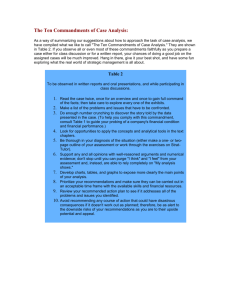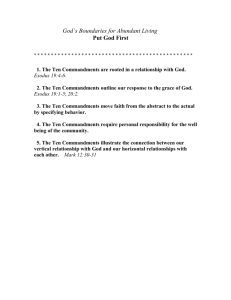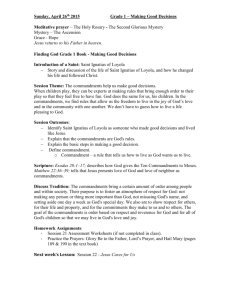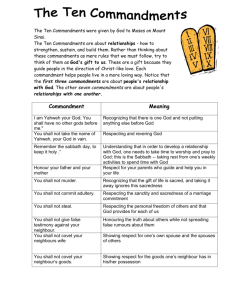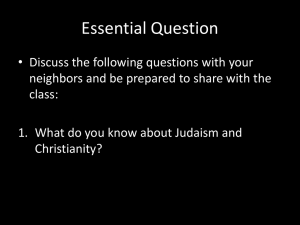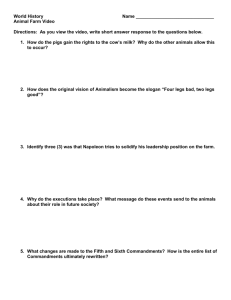Maybe. Maybe not. - Oklahoma Education Association
advertisement
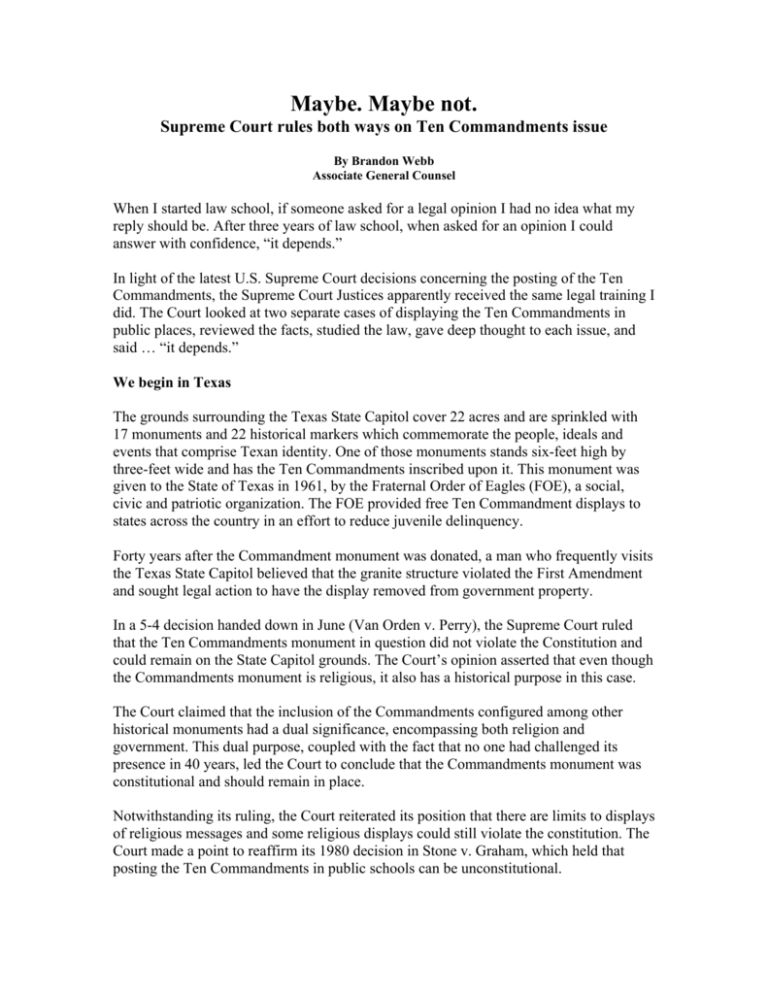
Maybe. Maybe not. Supreme Court rules both ways on Ten Commandments issue By Brandon Webb Associate General Counsel When I started law school, if someone asked for a legal opinion I had no idea what my reply should be. After three years of law school, when asked for an opinion I could answer with confidence, “it depends.” In light of the latest U.S. Supreme Court decisions concerning the posting of the Ten Commandments, the Supreme Court Justices apparently received the same legal training I did. The Court looked at two separate cases of displaying the Ten Commandments in public places, reviewed the facts, studied the law, gave deep thought to each issue, and said … “it depends.” We begin in Texas The grounds surrounding the Texas State Capitol cover 22 acres and are sprinkled with 17 monuments and 22 historical markers which commemorate the people, ideals and events that comprise Texan identity. One of those monuments stands six-feet high by three-feet wide and has the Ten Commandments inscribed upon it. This monument was given to the State of Texas in 1961, by the Fraternal Order of Eagles (FOE), a social, civic and patriotic organization. The FOE provided free Ten Commandment displays to states across the country in an effort to reduce juvenile delinquency. Forty years after the Commandment monument was donated, a man who frequently visits the Texas State Capitol believed that the granite structure violated the First Amendment and sought legal action to have the display removed from government property. In a 5-4 decision handed down in June (Van Orden v. Perry), the Supreme Court ruled that the Ten Commandments monument in question did not violate the Constitution and could remain on the State Capitol grounds. The Court’s opinion asserted that even though the Commandments monument is religious, it also has a historical purpose in this case. The Court claimed that the inclusion of the Commandments configured among other historical monuments had a dual significance, encompassing both religion and government. This dual purpose, coupled with the fact that no one had challenged its presence in 40 years, led the Court to conclude that the Commandments monument was constitutional and should remain in place. Notwithstanding its ruling, the Court reiterated its position that there are limits to displays of religious messages and some religious displays could still violate the constitution. The Court made a point to reaffirm its 1980 decision in Stone v. Graham, which held that posting the Ten Commandments in public schools can be unconstitutional. On to Kentucky On the same summer day when the Texas opinion was issued, the Court also ruled in McCreary County, Kentucky v. ACLU, that framed copies of the Ten Commandments which had been displayed in Kentucky county courthouses could not be posted. After a lawsuit was filed complaining about the Ten Commandments being posted on courthouse walls, the Kentucky counties added eight smaller documents around the Commandments. As the legal challenges continued, the counties changed attorneys and revised the displays again, making all documents the same size. The ancillary documents included copies of the Declaration of Independence and The Star Spangled Banner. In the Kentucky case, the Court was again divided 5-4. However, this time the majority ruled that a Ten Commandments display was unconstitutional. Unlike the Texas case, the majority said the primary purpose of the Kentucky displays was to advance religion and, therefore, violated the First Amendment. Moreover, the Court said it could not find an analytical or historical connection between the Ten Commandments and the other documents which were part of the display. Nevertheless, the Supreme Court acknowledged that its own courtroom depicts Moses holding the Ten Commandments, and readily admitted that under the right context and purpose the government can display the Commandments or other religious symbols. In requiring the removal of the Kentucky Commandments, the majority once again referenced Stone v. Graham. Twenty-five years ago, the Court ruled in Stone that copies of the Ten Commandments posted in public schools were unconstitutional due to the lack of an educational purpose and the primary effect of advancing religion. Even though the Commandments were purchased with private contributions and contained small print on the bottom of the display stating that the Commandments helped form U.S. law, the Court held the display still violated the First Amendment. The Court maintained that religion which is integrated into the curriculum and used in appropriate study can be constitutional, but did not occur in this instance. To post or not to post? So how do these two diverse opinions affect government-sponsored religion in Oklahoma schools? Well, it depends. The question of placing religious displays on government property remains a very “factspecific” question. While the Court may allow the government to post religious displays which have a historical or educational purpose, the Justices continue to affirm the special nature of public schools, the need to avoid the appearance of promoting religion to impressionable children, and the unconstitutional nature of state sponsored messages which have the primary purpose of advancing religion.
